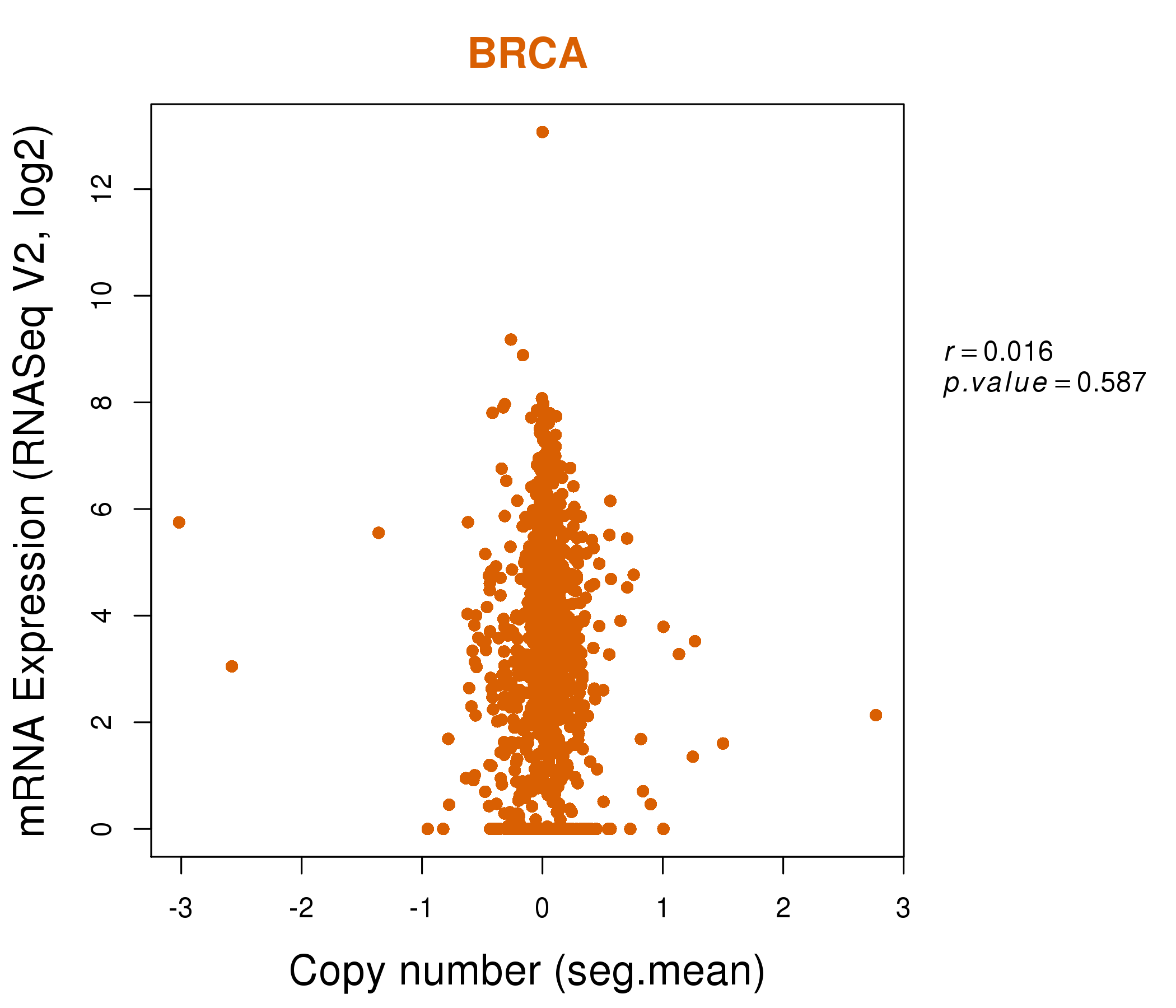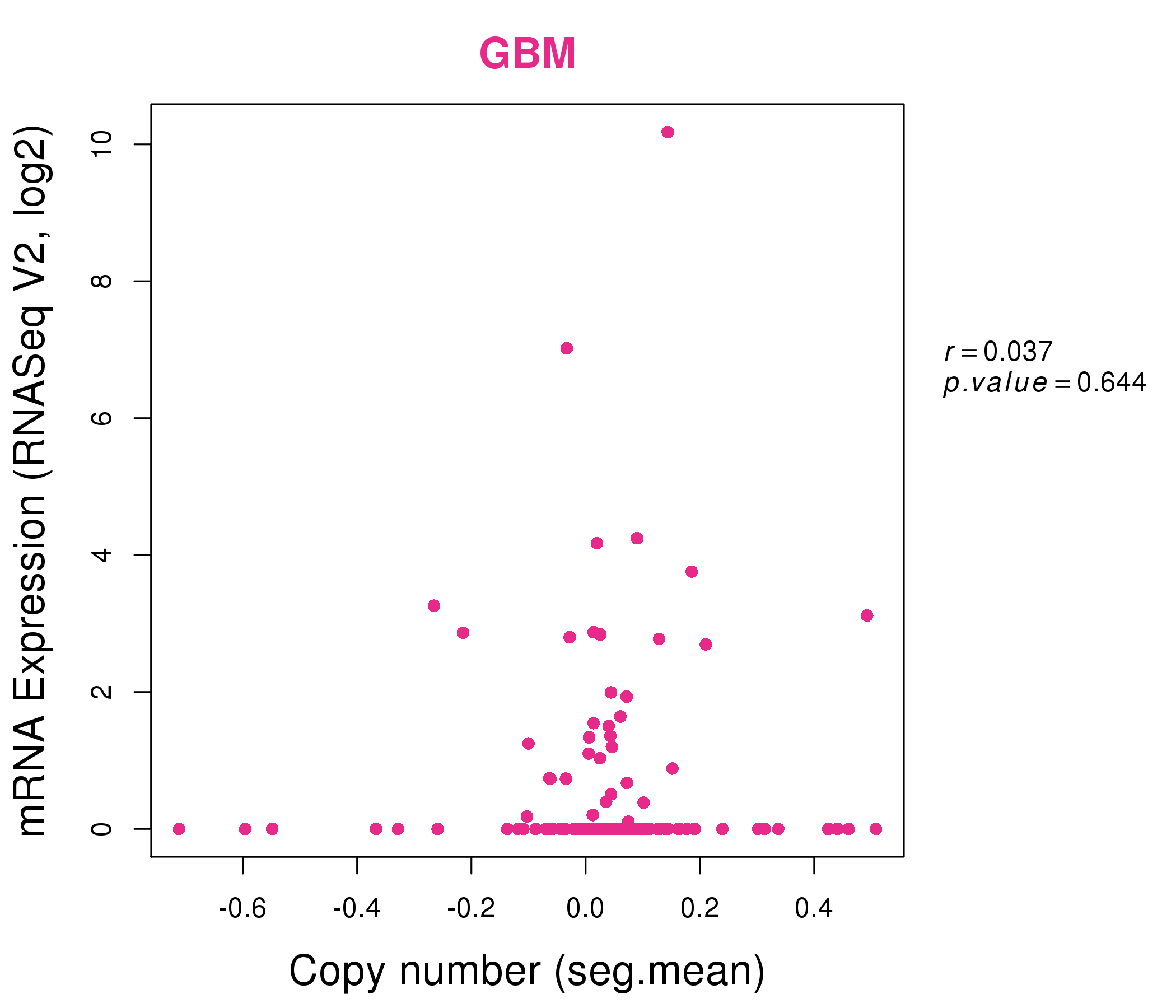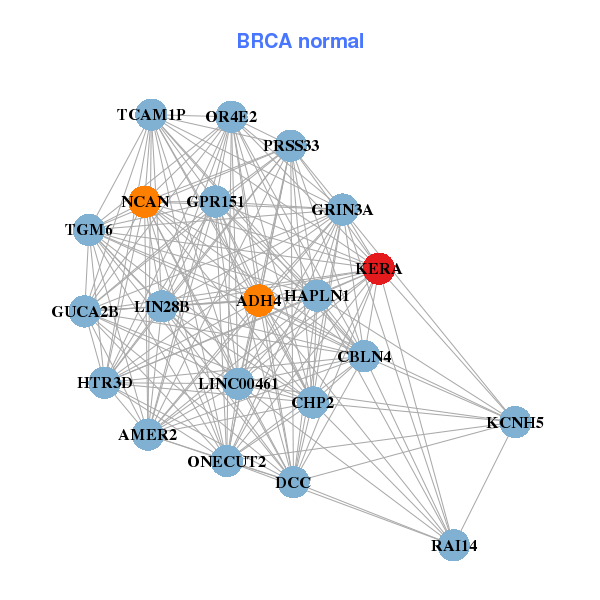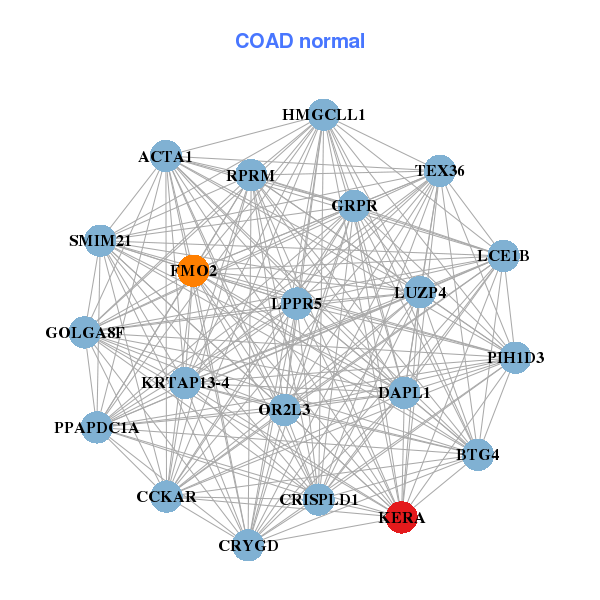|
||||||||||||||||||||||||||||||||||||||||||||||||||||||||||||||||||||||||||||||||||||||||||||||||||||||||||||||||||||||||||||||||||||||||||||||||||||||||||||||||||||||||||||||||||||||||||||||||||||||||||||||||||||||||||||||||||||||||||||||||||||||||||||||||||||||||||||||||||||||||||||||||||||||||||||||||||||||||||
| |
| Phenotypic Information (metabolism pathway, cancer, disease, phenome) |
| |
| |
| Gene-Gene Network Information: Co-Expression Network, Interacting Genes & KEGG |
| |
|
| Gene Summary for KERA |
| Basic gene info. | Gene symbol | KERA |
| Gene name | keratocan | |
| Synonyms | CNA2|KTN|SLRR2B | |
| Cytomap | UCSC genome browser: 12q22 | |
| Genomic location | chr12 :91444270-91452131 | |
| Type of gene | protein-coding | |
| RefGenes | NM_007035.3, | |
| Ensembl id | ENSG00000139330 | |
| Description | keratan sulfate proteoglycan keratocan | |
| Modification date | 20141207 | |
| dbXrefs | MIM : 603288 | |
| HGNC : HGNC | ||
| Ensembl : ENSG00000139330 | ||
| HPRD : 04477 | ||
| Vega : OTTHUMG00000170073 | ||
| Protein | UniProt: go to UniProt's Cross Reference DB Table | |
| Expression | CleanEX: HS_KERA | |
| BioGPS: 11081 | ||
| Gene Expression Atlas: ENSG00000139330 | ||
| The Human Protein Atlas: ENSG00000139330 | ||
| Pathway | NCI Pathway Interaction Database: KERA | |
| KEGG: KERA | ||
| REACTOME: KERA | ||
| ConsensusPathDB | ||
| Pathway Commons: KERA | ||
| Metabolism | MetaCyc: KERA | |
| HUMANCyc: KERA | ||
| Regulation | Ensembl's Regulation: ENSG00000139330 | |
| miRBase: chr12 :91,444,270-91,452,131 | ||
| TargetScan: NM_007035 | ||
| cisRED: ENSG00000139330 | ||
| Context | iHOP: KERA | |
| cancer metabolism search in PubMed: KERA | ||
| UCL Cancer Institute: KERA | ||
| Assigned class in ccmGDB | C | |
| Top |
| Phenotypic Information for KERA(metabolism pathway, cancer, disease, phenome) |
| Cancer | CGAP: KERA |
| Familial Cancer Database: KERA | |
| * This gene is included in those cancer gene databases. |
|
|
|
|
|
| . | ||||||||||||||||||||||||||||||||||||||||||||||||||||||||||||||||||||||||||||||||||||||||||||||||||||||||||||||||||||||||||||||||||||||||||||||||||||||||||||||||||||||||||||||||||||||||||||||||||||||||||||||||||||||||||||||||||||||||||||||||||||||||||||||||||||||||||||||||||||||||||||||||||||||||||||||||||||
Oncogene 1 | Significant driver gene in | |||||||||||||||||||||||||||||||||||||||||||||||||||||||||||||||||||||||||||||||||||||||||||||||||||||||||||||||||||||||||||||||||||||||||||||||||||||||||||||||||||||||||||||||||||||||||||||||||||||||||||||||||||||||||||||||||||||||||||||||||||||||||||||||||||||||||||||||||||||||||||||||||||||||||||||||||||||||||
| cf) number; DB name 1 Oncogene; http://nar.oxfordjournals.org/content/35/suppl_1/D721.long, 2 Tumor Suppressor gene; https://bioinfo.uth.edu/TSGene/, 3 Cancer Gene Census; http://www.nature.com/nrc/journal/v4/n3/abs/nrc1299.html, 4 CancerGenes; http://nar.oxfordjournals.org/content/35/suppl_1/D721.long, 5 Network of Cancer Gene; http://ncg.kcl.ac.uk/index.php, 1Therapeutic Vulnerabilities in Cancer; http://cbio.mskcc.org/cancergenomics/statius/ |
| REACTOME_METABOLISM_OF_CARBOHYDRATES | |
| OMIM | |
| Orphanet | |
| Disease | KEGG Disease: KERA |
| MedGen: KERA (Human Medical Genetics with Condition) | |
| ClinVar: KERA | |
| Phenotype | MGI: KERA (International Mouse Phenotyping Consortium) |
| PhenomicDB: KERA | |
| Mutations for KERA |
| * Under tables are showing count per each tissue to give us broad intuition about tissue specific mutation patterns.You can go to the detailed page for each mutation database's web site. |
| There's no structural variation information in COSMIC data for this gene. |
| * From mRNA Sanger sequences, Chitars2.0 arranged chimeric transcripts. This table shows KERA related fusion information. |
| ID | Head Gene | Tail Gene | Accession | Gene_a | qStart_a | qEnd_a | Chromosome_a | tStart_a | tEnd_a | Gene_a | qStart_a | qEnd_a | Chromosome_a | tStart_a | tEnd_a |
| Top |
| Mutation type/ Tissue ID | brca | cns | cerv | endome | haematopo | kidn | Lintest | liver | lung | ns | ovary | pancre | prost | skin | stoma | thyro | urina | |||
| Total # sample | 1 | |||||||||||||||||||
| GAIN (# sample) | 1 | |||||||||||||||||||
| LOSS (# sample) |
| cf) Tissue ID; Tissue type (1; Breast, 2; Central_nervous_system, 3; Cervix, 4; Endometrium, 5; Haematopoietic_and_lymphoid_tissue, 6; Kidney, 7; Large_intestine, 8; Liver, 9; Lung, 10; NS, 11; Ovary, 12; Pancreas, 13; Prostate, 14; Skin, 15; Stomach, 16; Thyroid, 17; Urinary_tract) |
| Top |
|
 |
| Top |
| Stat. for Non-Synonymous SNVs (# total SNVs=52) | (# total SNVs=18) |
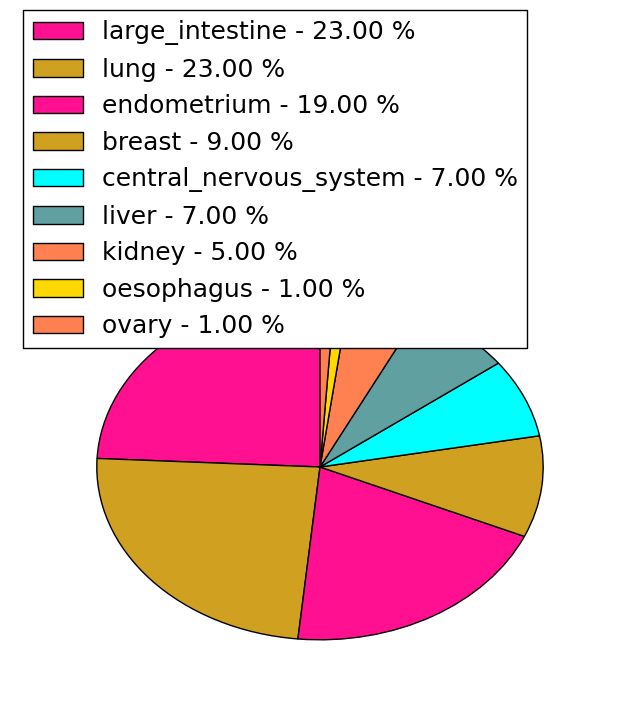 |  |
(# total SNVs=0) | (# total SNVs=0) |
| Top |
| * When you move the cursor on each content, you can see more deailed mutation information on the Tooltip. Those are primary_site,primary_histology,mutation(aa),pubmedID. |
| GRCh37 position | Mutation(aa) | Unique sampleID count |
| chr12:91449939-91449939 | p.F40F | 4 |
| chr12:91449250-91449250 | p.S270L | 3 |
| chr12:91449844-91449844 | p.R72I | 3 |
| chr12:91449223-91449223 | p.R279Q | 2 |
| chr12:91449552-91449552 | p.T169T | 2 |
| chr12:91449860-91449860 | p.P67S | 2 |
| chr12:91449308-91449308 | p.D251Y | 2 |
| chr12:91449866-91449866 | p.E65K | 2 |
| chr12:91449566-91449566 | p.L165V | 2 |
| chr12:91449875-91449875 | p.G62C | 2 |
| Top |
|
 |
| Point Mutation/ Tissue ID | 1 | 2 | 3 | 4 | 5 | 6 | 7 | 8 | 9 | 10 | 11 | 12 | 13 | 14 | 15 | 16 | 17 | 18 | 19 | 20 |
| # sample | 2 | 3 | 10 | 4 | 1 | 6 | 1 | 1 | 14 | 3 | 7 | |||||||||
| # mutation | 2 | 3 | 12 | 4 | 1 | 5 | 1 | 1 | 16 | 3 | 10 | |||||||||
| nonsynonymous SNV | 2 | 1 | 9 | 4 | 1 | 4 | 1 | 14 | 1 | 8 | ||||||||||
| synonymous SNV | 2 | 3 | 2 | 1 | 2 | 2 | 2 |
| cf) Tissue ID; Tissue type (1; BLCA[Bladder Urothelial Carcinoma], 2; BRCA[Breast invasive carcinoma], 3; CESC[Cervical squamous cell carcinoma and endocervical adenocarcinoma], 4; COAD[Colon adenocarcinoma], 5; GBM[Glioblastoma multiforme], 6; Glioma Low Grade, 7; HNSC[Head and Neck squamous cell carcinoma], 8; KICH[Kidney Chromophobe], 9; KIRC[Kidney renal clear cell carcinoma], 10; KIRP[Kidney renal papillary cell carcinoma], 11; LAML[Acute Myeloid Leukemia], 12; LUAD[Lung adenocarcinoma], 13; LUSC[Lung squamous cell carcinoma], 14; OV[Ovarian serous cystadenocarcinoma ], 15; PAAD[Pancreatic adenocarcinoma], 16; PRAD[Prostate adenocarcinoma], 17; SKCM[Skin Cutaneous Melanoma], 18:STAD[Stomach adenocarcinoma], 19:THCA[Thyroid carcinoma], 20:UCEC[Uterine Corpus Endometrial Carcinoma]) |
| Top |
| * We represented just top 10 SNVs. When you move the cursor on each content, you can see more deailed mutation information on the Tooltip. Those are primary_site, primary_histology, mutation(aa), pubmedID. |
| Genomic Position | Mutation(aa) | Unique sampleID count |
| chr12:91449250 | p.S270L | 3 |
| chr12:91449875 | p.R72I | 2 |
| chr12:91449755 | p.G62C | 2 |
| chr12:91449939 | p.R142K | 2 |
| chr12:91449634 | p.F40F | 2 |
| chr12:91449844 | p.L102V | 2 |
| chr12:91449874 | p.W99S | 1 |
| chr12:91449339 | p.G3G | 1 |
| chr12:91449558 | p.R279Q | 1 |
| chr12:91445274 | p.K189R | 1 |
| * Copy number data were extracted from TCGA using R package TCGA-Assembler. The URLs of all public data files on TCGA DCC data server were gathered on Jan-05-2015. Function ProcessCNAData in TCGA-Assembler package was used to obtain gene-level copy number value which is calculated as the average copy number of the genomic region of a gene. |
 |
| cf) Tissue ID[Tissue type]: BLCA[Bladder Urothelial Carcinoma], BRCA[Breast invasive carcinoma], CESC[Cervical squamous cell carcinoma and endocervical adenocarcinoma], COAD[Colon adenocarcinoma], GBM[Glioblastoma multiforme], Glioma Low Grade, HNSC[Head and Neck squamous cell carcinoma], KICH[Kidney Chromophobe], KIRC[Kidney renal clear cell carcinoma], KIRP[Kidney renal papillary cell carcinoma], LAML[Acute Myeloid Leukemia], LUAD[Lung adenocarcinoma], LUSC[Lung squamous cell carcinoma], OV[Ovarian serous cystadenocarcinoma ], PAAD[Pancreatic adenocarcinoma], PRAD[Prostate adenocarcinoma], SKCM[Skin Cutaneous Melanoma], STAD[Stomach adenocarcinoma], THCA[Thyroid carcinoma], UCEC[Uterine Corpus Endometrial Carcinoma] |
| Top |
| Gene Expression for KERA |
| * CCLE gene expression data were extracted from CCLE_Expression_Entrez_2012-10-18.res: Gene-centric RMA-normalized mRNA expression data. |
 |
| * Normalized gene expression data of RNASeqV2 was extracted from TCGA using R package TCGA-Assembler. The URLs of all public data files on TCGA DCC data server were gathered at Jan-05-2015. Only eight cancer types have enough normal control samples for differential expression analysis. (t test, adjusted p<0.05 (using Benjamini-Hochberg FDR)) |
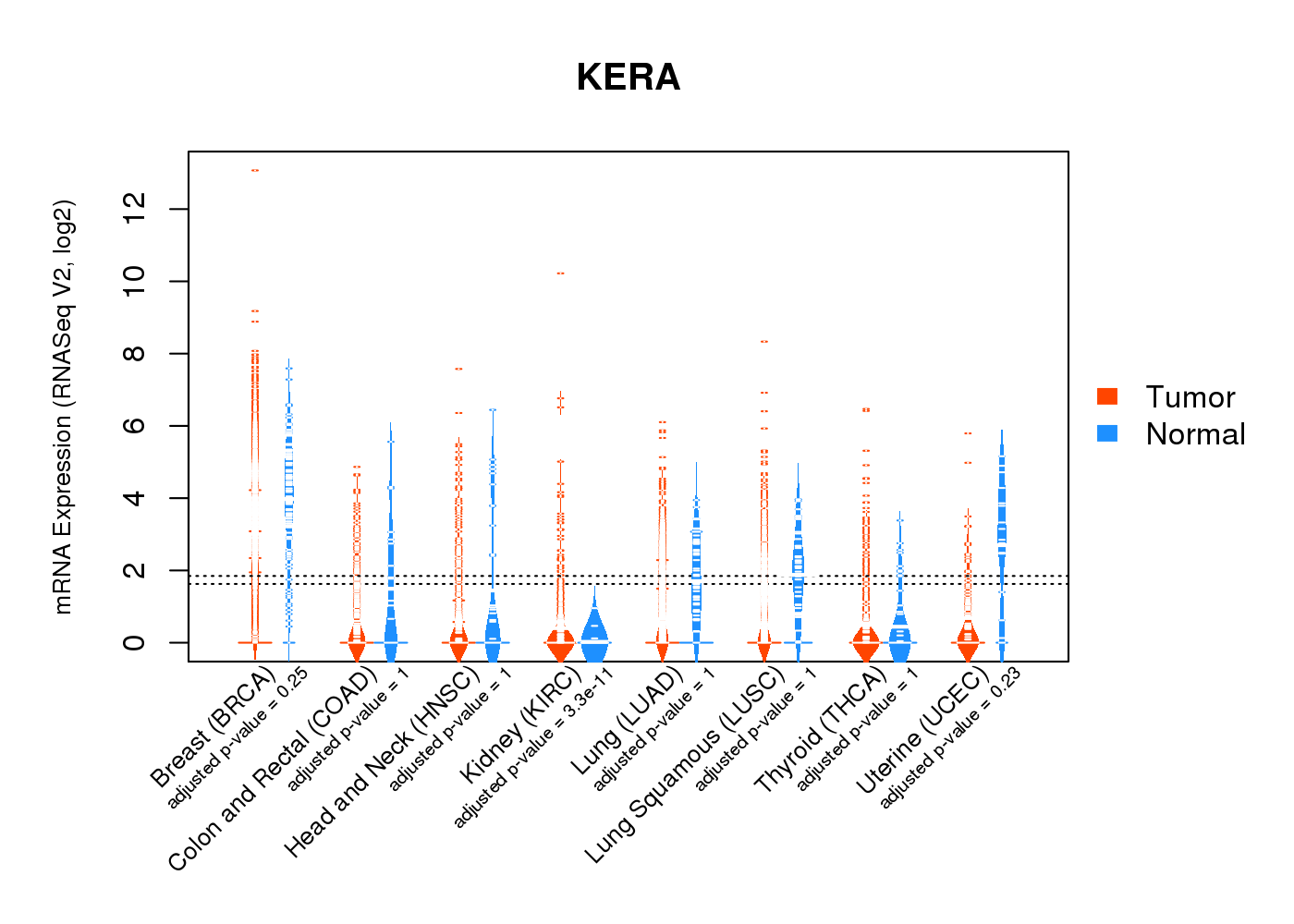 |
| Top |
| * This plots show the correlation between CNV and gene expression. |
: Open all plots for all cancer types
 |
|
 |
|
| Top |
| Gene-Gene Network Information |
| * Co-Expression network figures were drawn using R package igraph. Only the top 20 genes with the highest correlations were shown. Red circle: input gene, orange circle: cell metabolism gene, sky circle: other gene |
: Open all plots for all cancer types
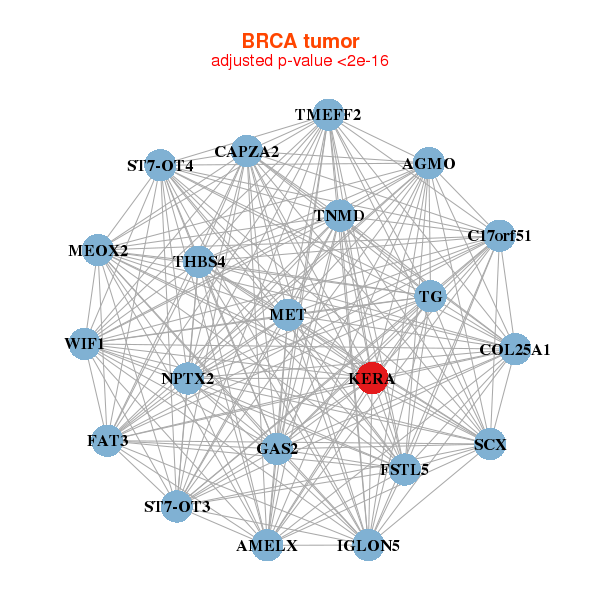 |
|
| AMELX,C17orf51,CAPZA2,COL25A1,FAT3,FSTL5,GAS2, IGLON5,KERA,MEOX2,MET,NPTX2,SCX,ST7-OT3, ST7-OT4,TG,THBS4,TMEFF2,AGMO,TNMD,WIF1 | ADH4,CBLN4,CHP2,DCC,AMER2,GPR151,GRIN3A, GUCA2B,HAPLN1,HTR3D,KCNH5,KERA,LIN28B,LINC00461, NCAN,ONECUT2,OR4E2,PRSS33,RAI14,TCAM1P,TGM6 |
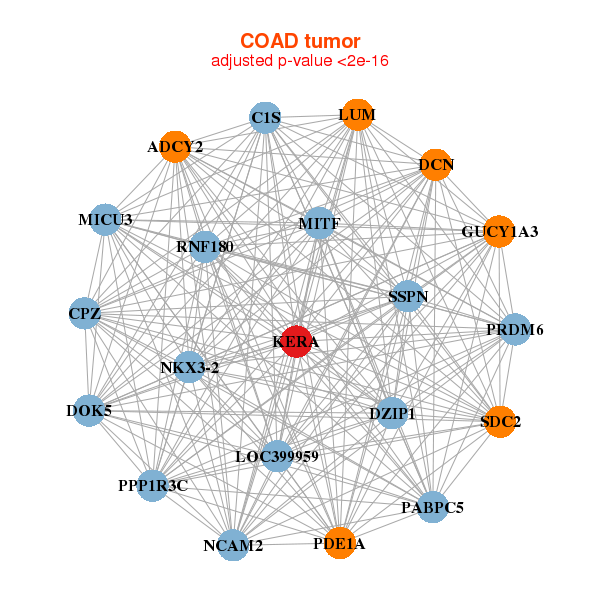 |
|
| ADCY2,C1S,CPZ,DCN,DOK5,DZIP1,MICU3, GUCY1A3,KERA,LOC399959,LUM,MITF,NCAM2,NKX3-2, PABPC5,PDE1A,PPP1R3C,PRDM6,RNF180,SDC2,SSPN | ACTA1,BTG4,TEX36,SMIM21,CCKAR,CRISPLD1,CRYGD, PIH1D3,DAPL1,FMO2,GOLGA8F,GRPR,HMGCLL1,KERA, KRTAP13-4,LCE1B,LPPR5,LUZP4,OR2L3,PPAPDC1A,RPRM |
| * Co-Expression network figures were drawn using R package igraph. Only the top 20 genes with the highest correlations were shown. Red circle: input gene, orange circle: cell metabolism gene, sky circle: other gene |
: Open all plots for all cancer types
| Top |
: Open all interacting genes' information including KEGG pathway for all interacting genes from DAVID
| Top |
| Pharmacological Information for KERA |
| There's no related Drug. |
| Top |
| Cross referenced IDs for KERA |
| * We obtained these cross-references from Uniprot database. It covers 150 different DBs, 18 categories. http://www.uniprot.org/help/cross_references_section |
: Open all cross reference information
|
Copyright © 2016-Present - The Univsersity of Texas Health Science Center at Houston @ |






